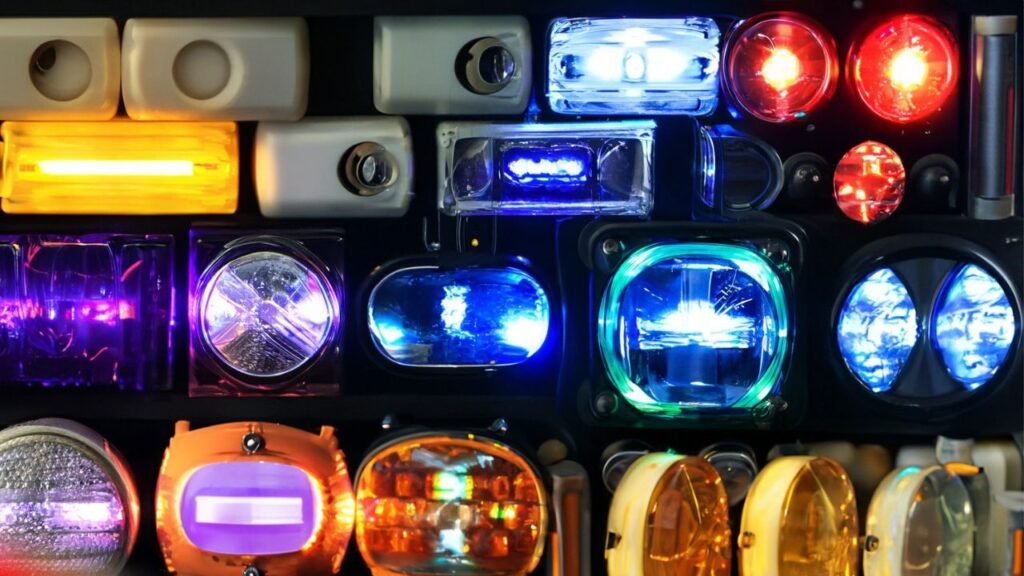Ensure safe biking with our complete step-through-step manual on how to turn on bike lights fixtures. Illuminate your route and enhance visibility whilst riding. Ride hopefully and stay secure on the road!

Cycling at night or in low-light conditions can be unsafe if you don’t have proper lighting. Bike lighting fixtures are critical accessories for each cyclist as they considerably beautify visibility and make certain a safer ridding enjoy. In this article, we’ll walk you thru the step-by means of-step technique of switching on a bicycle mild, making sure you have got the understanding you need to stay secure on the road.
Table of Contents
How to Turn On Bike Lights: A Step-by-Step Guide
Importance of Bike Lights
Bicycle lights play an very important role in making you sure safety for cyclists & other road users. They boom the visibility of your bike, making it easier for drivers, pedestrians and different cyclists to peer you, specifically in dimly lit or darkish areas. Properly illuminated bicycles notably lessen the threat of injuries, ultimately shielding lives.
Types of Bike Lights
Before delving into turning on bike lights, it’s important to understand the different types available:
Front Bike Lights
Front bike lighting, as the call suggests, are mounted at the front of the bicycle and are designed to light up the route beforehand. They typically emit a white light and come in various brightness levels.
Rear Bike Lights
Rear bike lighting are connected to the returned of the bicycle and emit a red light. These lighting are crucial for alerting motorists for your presence, improving your visibility from at the back of.
Combination Bike Lights
Combination bike lights integrate both front and rear lights into a single unit. These lights offer comfort and frequently come with multiple lights modes for numerous conditions.

Selecting the Right Bike Lights
Choosing the appropriate bike lights involves considering several factors based on your specific needs and the type of cycling you do.
Assessing Your Needs
Consider the frequency and duration of your rides, whether you primarily ride in urban or rural areas, and the level of ambient lighting.
Evaluating Visibility and Power
Look for bike lights with high lumen output to ensure excellent visibility. Additionally, check if the lights have one-of-a-kind brightness settings and numerous mild styles.
Evaluating Durability and Weather Resistance
Opt for lights that are durable and weather-resistant, especially if you frequently ride in adverse weather conditions.

Also Read: How Does A Rim Lock Work On DirtBike: Unsung Hero Of Biking
Installing Your Bike Lights
Now which you have selected the perfect cycle lighting fixtures, it’s time to install them in your bicycle.
Mounting Front Bike Light
Attach the front bike light securely to your handlebars using the provided mounting system or any compatible attachment. Ensure the light is facing forward, with the beam aligning parallel to the ground.
Attaching Rear Bike Light
Fix the rear bike light to the seat post or rear frame of your bicycle. Adjust the angle to ensure maximum visibility from behind.

Powering Bike Lights
Bike lights can be powered in different ways, every with its benefits and considerations.
Battery-Operated Lights
Battery-operated lights are commonly used and usually offer a good balance between convenience and price. Always ensure you have spare batteries available for longer rides.
USB Rechargeable Lights
USB rechargeable lighting are gaining popularity because of their convenience and sustainability.
These lights can be charged with a computer, power bank or wall socket.
Dynamo Lights
Dynamo lights generate electricity as you pedal, eliminating the need for batteries or external power sources. They are an eco-friendly choice but might also require expert installation.

Turning On Bike Lights
To effectively turn on your bike lights, follow these steps:
Turning On Front Bike Light
Locate your power button or switch on your front cycle light. Press or toggle it to activate the light. Depending on the light’s features, you may be able to adjust brightness and select different modes.
Activating Rear Bike Light
Similar to the front bike light, locate the power button or switch on your rear bike light and activate it. Ensure the light is clearly visible from behind and consider using additional light modes such as blinking for increased attention.
Tips for Optimal Visibility
- Keep the light beam angled low to avoid blinding oncoming traffic.
- Regularly check your lights before each ride to ensure they are functioning correctly.
- Use extra reflective add-ons or clothing to in addition beautify your visibility.

Best Practices for Using Your Bike Lights
To make the most of your bike lights, follow these best practices:
Regularly Check and Maintain Bike Lights
Inspect your bike lights regularly to ensure they are clean, undamaged, and functioning optimally. Replace batteries or charge rechargeable lights as needed.
Adjusting Light Angle
Periodically assess the angle of your bike lights and readjust if necessary. Optimal lighting angle ensures maximum visibility without hindering the vision of others.
Complying with Legal Requirements
Research and follow the local laws and regulations regarding bike lights. Some areas may have specific brightness requirements or stipulate when and where lights must be used.
Conclusion:
Turning on bike lights is a simple yet critical step to ensure your safety while cycling. By following the tips mentioned in this article, you may with a bit of luck navigate roads or trails all through low-mild conditions, considerably decreasing the risk of injuries. Remember to always put safety first and be vigilant.
Frequently Asked Questions (FAQs) About On How to Turn On Bike Lights
Q1. Are bike lights legally required?
A: Yes, in most jurisdictions, it is legally required for cyclists to use bike lights during low-light conditions. Research your local laws for specific requirements.
Q2. Can I use bike lights during the day?
A: Although not legally required in most places, using bike lights during the day can enhance your visibility, especially in busy or dimly lit areas.
Q3. How long do rechargeable bike lights last?
A: The battery life of rechargeable bike lights varies depending on the model and brightness level. Some lighting fixtures can remaining numerous hours on a unmarried charge.
Q4. Can I mount bike lights on my helmet?
A: Yes, many bike lights come with accessories for mounting on helmets, offering an additional lighting option.
Q5. How often should I replace the batteries on my bike lights?
A: Regularly check the battery levels of your bike lights. Replace batteries when they are low, or consider switching to rechargeable lights for cost savings and convenience.

